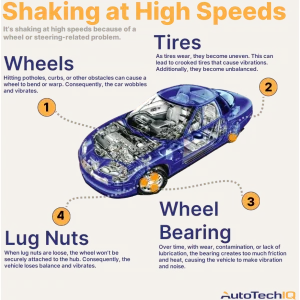What is a Gearless Transmission?
A gearless transmission, also known as a continuously variable transmission (CVT), is a type of automatic transmission that provides a seamless and continuous range of gear ratios. It’s different from traditional automatic transmissions. Instead of using fixed gears, it utilizes a system of belts and pulleys, or other mechanisms, to provide an infinite number of gear ratios within a specific range.
Advantages of Gearless Transmissions
Gearless transmissions offer several advantages over traditional automatic transmissions. They are fuel-efficient. CVTs can keep the engine operating at its most efficient RPM range, resulting in better fuel economy.
- Improved Fuel Efficiency: Optimized engine performance leads to less fuel consumption.
- Smoother Acceleration: Seamless gear ratio changes provide a smoother driving experience.
- Reduced Emissions: Efficient engine operation contributes to lower emissions.
Disadvantages of Gearless Transmissions
While gearless transmissions have their benefits, they also have some drawbacks. They can be noisy. Some drivers find the engine noise associated with CVTs to be unpleasant, especially during acceleration.
Here are some potential drawbacks:
- “Rubber Band” Effect: A delay between throttle input and vehicle acceleration can feel unnatural.
- Noise: The engine may rev high and stay there during acceleration, creating a droning sound.
- Durability Concerns: Early CVTs had some reliability issues, although modern designs are more robust.
FAQ: Gearless Transmissions
Are gearless transmissions reliable?
Modern CVTs are generally reliable, but it’s essential to follow the manufacturer’s recommended maintenance schedule. Regular fluid changes are crucial. Proper maintenance can significantly extend the lifespan of a CVT.
Do gearless transmissions provide good performance?
CVTs can provide good performance, especially in terms of fuel efficiency and smooth acceleration. Performance varies by model. However, some drivers may prefer the more direct feel of a traditional automatic transmission.
What cars use gearless transmissions?
Many modern cars use gearless transmissions, especially those focused on fuel efficiency. They are common. Examples include many models from Toyota, Honda, Nissan, and Subaru.
The Future of Gearless Transmissions
The future of gearless transmissions looks promising. Technology is improving. Manufacturers are constantly working to refine CVT designs, addressing issues like noise and the “rubber band” effect.
Expect to see more CVTs paired with:
- Hybrid powertrains: CVTs are a natural fit for hybrid vehicles due to their efficiency.
- Electric vehicles: Some EVs are using single-speed transmissions or CVTs to optimize performance.
- Advanced control systems: Software improvements are enhancing the driving experience with CVTs.
Maintaining Your Gearless Transmission
Proper maintenance is key to ensuring the longevity of your CVT. Don’t skip services. Here are some essential maintenance tips:
- Regular Fluid Changes: Use the manufacturer-recommended CVT fluid and change it at the specified intervals.
- Avoid Harsh Driving: Excessive acceleration and hard braking can put extra stress on the transmission.
- Check for Leaks: Inspect the transmission for any signs of leaks and address them promptly.
Why is CVT fluid so important?
CVT fluid is specifically formulated to provide the necessary lubrication and friction characteristics for the transmission’s belts and pulleys. It’s not generic. Using the wrong fluid can cause serious damage.
Gearless vs. Traditional Automatic: Which is Right for You?
The choice between a gearless transmission and a traditional automatic transmission depends on your individual needs and preferences. Consider your priorities. If fuel efficiency is your top priority, a CVT might be the better choice.
Consider these factors:
- Fuel Efficiency: CVTs generally offer better fuel economy.
- Driving Experience: Some drivers prefer the more direct feel of a traditional automatic.
- Budget: The cost of maintenance and potential repairs should be considered.
Gearless transmissions offer a unique driving experience with a focus on efficiency and smoothness. They are evolving. While they may not be for everyone, they represent an important step in the evolution of automotive technology.
By understanding the advantages and disadvantages of gearless transmissions, you can make an informed decision about whether a car with a CVT is right for you.
Troubleshooting Common CVT Issues
Even with proper maintenance, CVTs can sometimes experience issues. Be aware of symptoms. Here are some common problems and potential solutions:
- Slipping: The engine revs high, but the car doesn’t accelerate properly. This could indicate a worn belt or low fluid level.
- Jerking or Shuddering: This can be caused by contaminated fluid or internal component wear.
- Unusual Noises: Whining, buzzing, or clicking sounds could indicate a problem with the CVT.
When to Seek Professional Help
If you experience any of these issues, it’s best to consult a qualified mechanic who specializes in CVT repairs. Don’t delay. Ignoring the problem can lead to more extensive and costly repairs.
The Environmental Impact of Gearless Transmissions
Gearless transmissions contribute to a smaller environmental footprint due to their improved fuel efficiency. Less fuel, less pollution. By optimizing engine performance, CVTs help reduce greenhouse gas emissions and conserve natural resources.
Here’s how CVTs help the environment:
- Reduced Fuel Consumption: Less fuel burned means fewer emissions released into the atmosphere.
- Lower Carbon Footprint: Efficient engine operation contributes to a smaller overall carbon footprint.
- Sustainable Transportation: CVTs support the development of more sustainable transportation solutions.
Are Gearless Transmissions Suitable for Towing?
The suitability of a gearless transmission for towing depends on the vehicle and the specific CVT design. Check the specs. Some CVTs are not designed for heavy towing, while others are specifically engineered to handle it.
Before towing with a vehicle equipped with a CVT, consider the following:
- Towing Capacity: Check the vehicle’s owner’s manual for the maximum towing capacity.
- CVT Cooler: Ensure the CVT is equipped with a cooler to prevent overheating during towing.
- Driving Style: Avoid aggressive acceleration and maintain a steady speed while towing.
The Evolution of CVT Technology
CVT technology has come a long way since its early days. Constant improvement. Modern CVTs are more refined, durable, and efficient than their predecessors.
Key advancements in CVT technology include:
- Improved Belt Materials: Stronger and more durable belts can handle higher torque loads.
- Advanced Control Systems: Sophisticated software algorithms optimize gear ratio changes for smoother performance.
- Reduced Noise and Vibration: Design improvements have minimized noise and vibration levels.
Gearless Transmissions in Electric Vehicles
While many electric vehicles (EVs) use single-speed transmissions, some are exploring the use of CVTs to further optimize performance and efficiency. New applications. CVTs can help EVs maintain optimal motor speed for different driving conditions.
Benefits of using CVTs in EVs:
- Extended Range: Optimizing motor speed can improve energy efficiency and extend the vehicle’s range.
- Improved Acceleration: CVTs can provide smoother and more consistent acceleration.
- Enhanced Driving Experience: Seamless gear ratio changes can enhance the overall driving experience.




